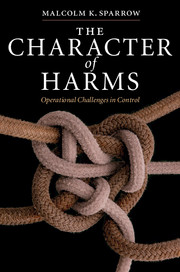10 - Catastrophic harms
from Part II - Special categories of harms
Published online by Cambridge University Press: 06 July 2010
Summary
This chapter examines the special operational challenges associated with harms that have never happened or happened only rarely, but which might bring extremely serious consequences if they did occur. Examples of such catastrophic risks include nuclear terrorism, other radiological disasters such as the meltdown of nuclear power-plant reactors, global pandemics, biological terrorism, genocide, earthquakes, hurricanes, or tsunami powerful enough to cause widespread devastation and casualties on a massive scale.
Some catastrophic risks, such as nuclear power-plant failure or terrorism involving weapons of mass destruction, are man-made. Others involve natural phenomena. Catastrophes might be unthinkable, in the sense that they are overwhelmingly depressing prospects to contemplate; but they are not unimaginable. Usually we can piece together from prior or related experiences a mental picture of what it might be like. But this does not help anyone understand how likely it is to happen. And not knowing the underlying probability presents all kinds of operational difficulties. It places us in what Hutter and Power refer to as “an informal “probabilitistic climate” where characterizations of likelihoods are often crude.” In this environment, small-probability high-impact risks may often be completely ignored, or equally well “characterize a “space of fear” which can induce hyper-precautionary attention to risk and security.”
Some catastrophic risks involve opponents, and the last chapter described how the involvement of conscious opponents might render probability assessments especially unreliable because of the variability introduced by their decisions.
- Type
- Chapter
- Information
- The Character of HarmsOperational Challenges in Control, pp. 217 - 230Publisher: Cambridge University PressPrint publication year: 2008



